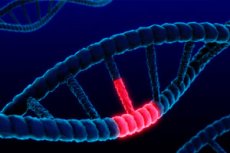New publications
Not New Mutations, But Strengthening Old Ones: How Exogenous Carcinogens Accelerate Cancer
Last reviewed: 09.08.2025

All iLive content is medically reviewed or fact checked to ensure as much factual accuracy as possible.
We have strict sourcing guidelines and only link to reputable media sites, academic research institutions and, whenever possible, medically peer reviewed studies. Note that the numbers in parentheses ([1], [2], etc.) are clickable links to these studies.
If you feel that any of our content is inaccurate, out-of-date, or otherwise questionable, please select it and press Ctrl + Enter.

Scientists from the University of Minnesota and the National Cancer Institute (NCI) have published a comprehensive analysis in Cell Reports showing that exposure to common carcinogens does not generate unique mutational signatures, but rather enhances existing endogenous mutation accumulation processes such as age-related deamination and APOBEC activity.
Why is this important?
Until now, it was believed that each carcinogen leaves its own mutational “fingerprint” in DNA, allowing its contribution to tumor development to be traced. This work offers a different view: many environmental pollutants and chemical agents, instead of creating new “signatures,” merely accelerate background mechanisms already operating in human cells.
Data and Methodology
- Samples: Over 1,200 lung, liver, and skin tumors from patients with documented exogenous exposures:
- Smoking (benzopyrene and other PAHs)
- Occupational contact with plastics (phosgene)
- High levels of air pollution (PM2.5 particles)
- Sequencing: Deep exome sequencing (>200×) for reliable detection of low-frequency somatic mutations.
- Signature analysis: deconvolution of mutational spectra taking into account 60 canonical COSMIC signatures (SBS1–SBS60), as well as assessment of the activity of replicative stress and oxidative damage.
Key Findings
No new signatures from exogenous agents. Neither benzopyrene, nor phosgene, nor fine particulate matter were associated with the emergence of unique mutational profiles.
Enhancement of background processes. Instead, up to a 2-fold increase in the contribution of three endogenous signatures was found in all groups:
SBS1 is a spontaneous deamination of 5-methylcytosine to thymine that accumulates with age.
SBS5 is a clock signature of aging with an unknown biochemical mechanism.
APOBEC (SBS2/SBS13) - cytosine editing mediated by the APOBEC family of enzymes.
Dose-response: In patients with longer and more intense exposure (more than 20 years of smoking or many years of work in plastics manufacturing plants), the contribution of these signatures increased linearly (correlation coefficient r = 0.68, p < 0.001).
Immune context: Increased APOBEC activity is associated with the emergence of more novel neoantigens and increased infiltration of cytotoxic CD8⁺ T cells, which may increase the sensitivity of tumors to immunotherapy.
Interpretation of results
“Our research is paradigm-shifting: carcinogens work not by creating exogenous mutations, but by accelerating existing mutational ‘mechanisms’ in cells,” explains Dr Mandy Smith (NCI). According to her, this opens up new prospects for prevention and therapy – we need to strive not only to reduce the direct DNA-damaging load, but also to slow down the background mutation processes associated with aging and stress.
Clinical and epidemiological findings
- Prevention. The increase in background mutations means that it is important not only to protect against a specific agent, but also to reduce cellular stress in general – antioxidant therapy, lifestyle correction, minimization of chronic inflammation.
- Exposure biomarker: The level of SBS1/SBS5/APOBEC contributions can be used to estimate the overall “mutational load” and history of exposure to toxins.
- Therapeutic targets: APOBEC inhibitors or drugs that stabilize DNA methylation may slow down the accumulation of mutations and enhance the effect of immunotherapy.
Prospects for further research
- In vitro generation: studying how different carcinogens modulate APOBEC gene expression and cellular dehydrogenase activity.
- Clinical cohorts: validation of mutational accelerators in populations with different levels of air pollution, diet and smoking history.
- Combination interventions: developing strategies that combine exposure reduction, antioxidant protection and modulation of active mutational signatures.
In the discussion, the authors highlight the following key points:
Rethinking Mutational Fingerprints
“Our data show that rather than discovering ‘new’ mutational signatures from exogenous agents, carcinogens essentially accelerate already existing background processes of mutation accumulation,” notes Dr Mandy Smith (NCI).Impact on prevention and therapy
“This means that in addition to reducing exposure to toxins, we need to develop approaches to slow down endogenous mutational mechanisms – for example, through antioxidant protection or APOBEC inhibitors,” adds co-author Prof. John Edwards (University of Minnesota).Immunological Perspectives
“Increased APOBEC activity results in the emergence of new neoantigens and increased infiltration of CD8⁺ T cells, which may make these tumors more sensitive to immunotherapy,” said NCI’s Sarah Lee, MD.
This study demonstrates that sequencing and mutation signature analysis methods are becoming a powerful tool for understanding not only hereditary genetics but also the environmental influence on the acceleration of endogenous mutation processes, which opens up new directions in the fight against cancer.
